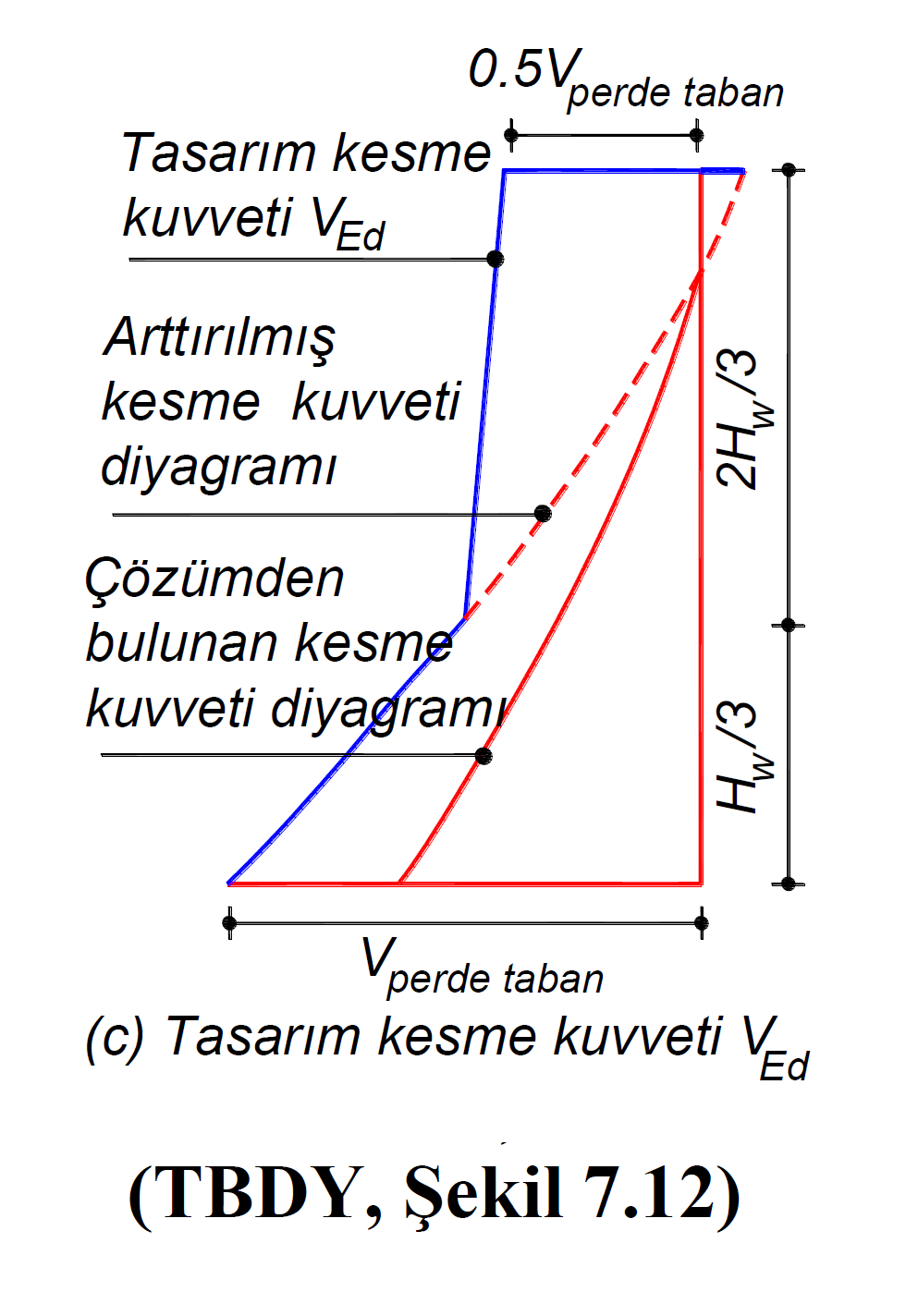Determination of Internal Forces Acting on Foundations (4.10.3)
For buildings with or without basement, the internal forces to be transferred from the building to the foundation are calculated automatically.
Symbols
D | Extra Strength Coefficient |
D alt | Strength Excess Coefficient applied to the lower part of the building |
D top | Strength Excess Coefficient applied to the lower part of the building |
According to Article 4.10.3.1 (a) of TBDY, in cases where the critical wall height starts from the top level of the foundation in buildings without basement or basement, the bending moment transferred from the wall to the foundation is obtained by multiplying the bending moment in the wall base section with the top coefficient D. However, due to the application of excessive strength coefficient , this moment value is not taken higher than the yield moment at the wall base in walls with high ductility level. The shear force transferred from the reinforced concrete wall to the foundation is the design shear force defined in Article 7.6.6.3 of TBDY . In the graphic below, the shear force graph of the curtain design which is explained in detail in 7.6.6.3 is given. In this case, the shear force transferred from the reinforced concrete wall to the foundation, V curtain base shear force value.

According to Article 4.10.3.1 (b) of TBDY, in buildings without basement or with basement , internal force components other than (a) and internal forces to be transferred from other elements other than curtains to the foundation are obtained by increasing the forces against the ductile design with the upper coefficient of 0.6D .
According to Article 4.10.3.2 of TBDY , if the critical wall height starts above the foundation top level in buildings with basements, the internal forces to be transferred from all elements to the foundation together with the bending moments and shear forces transferred from the curtain are calculated according to TBDY 4.10.1.5 .
In this case, in Determination of Element Internal Force Upper and Lower Parts of Structures with Basement (4.10.1) the analysis of buildings with basement, which is explained in detail in the title, according to the choice of "Single load case calculation method" or "Two load case calculation method", the internal forces based on the design that correspond to the ductile and non-ductile behavior of the structural system elements in the subsection will be transferred to the foundation. The internal forces obtained for both loading cases Determination of Element Internal Force Upper and Lower Parts of Structures with Basement (4.10.1) are explained in detail under the title.
Next Topic
